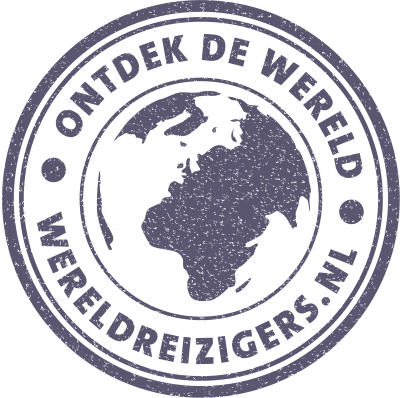Take a tour of Morocco† This beautiful travel route through Morocco, full of travel tips, takes you to all the must-sees in 2, 3 or 4 weeks. Do you already want to get into the atmosphere? First watch the incredibly beautiful video about Morocco at the top of this page, or turn on the video for the music and continue reading in a real Moroccan atmosphere! Morocco is a beautiful country to add to you world trip but also as a standalone tour. The country is very large and diverse, which sometimes makes it difficult to plan and make choices. In this extensive article we tell you all about it.
Independent travel through Morocco
The biggest sights are not exactly close to each other and that means that there is no other option than to travel criss-cross through the country. While planning our Itinerary through Morocco I found out (thanks to reading other blogs) that many people travel this country through an organized tour or through tours from Marrakesh. Shame! Traveling through Morocco yourself is doable, safe and a unique way to explore the country. We can really recommend it to everyone!

Traveling by public transport and taxis
We decided to complete the tour through Morocco on your own to do, without planning, with the public transport† Of course you can plan and fix things in advance if you like, but you don't have to. After reading this blog you can decide for yourself which route you take and what you do or do not want to plan. You can follow the travel route through Morocco below and on this page you will find many extra tips about budget, transport and travel information about Morocco.
Tip:: did you know that Morocco is no less than three times in the list with 24 must-sees of Africa for your bucket list state?
What are the 5 must-sees of Morocco?
1. Marrakech
Spend some time in Djemaa el-Fna, where you can find exotic street artists, tattoo artists, musicians and chefs. Afterwards, stroll through the medina, explore the souks, eat in the market, see the old town and enjoy Morocco's most international city. Marrakech has it all.
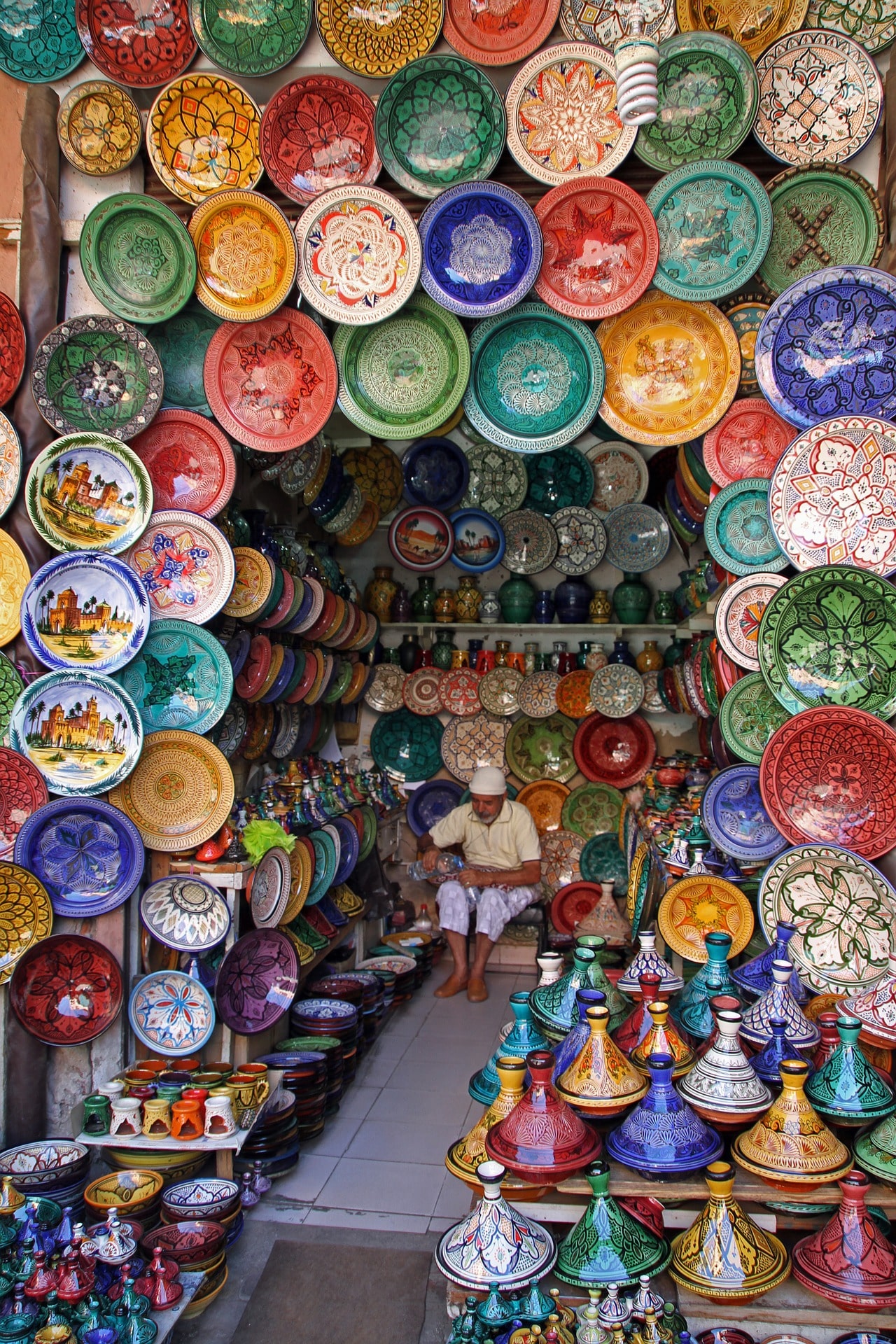
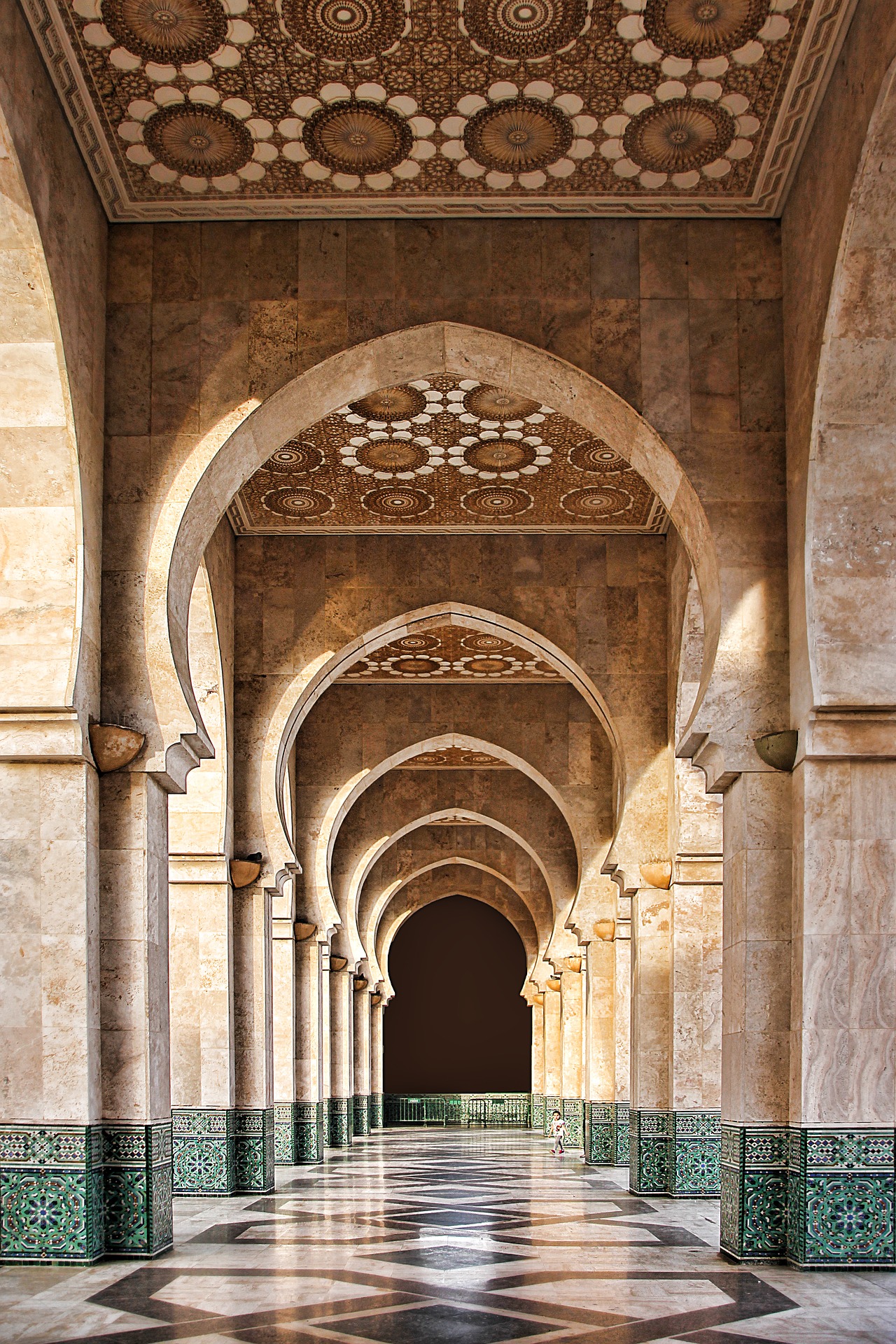
2. The Sahara Desert
The Sahara is of course part of your travel route through Morocco. The mighty desert is exactly as it is depicted in the movies: vast, empty and absolutely spectacular. You can spend the night in a simple tent in the dunes. This was my favorite activity in the country and I highly recommend it. The starry sky is unprecedented, because there is no light pollution!
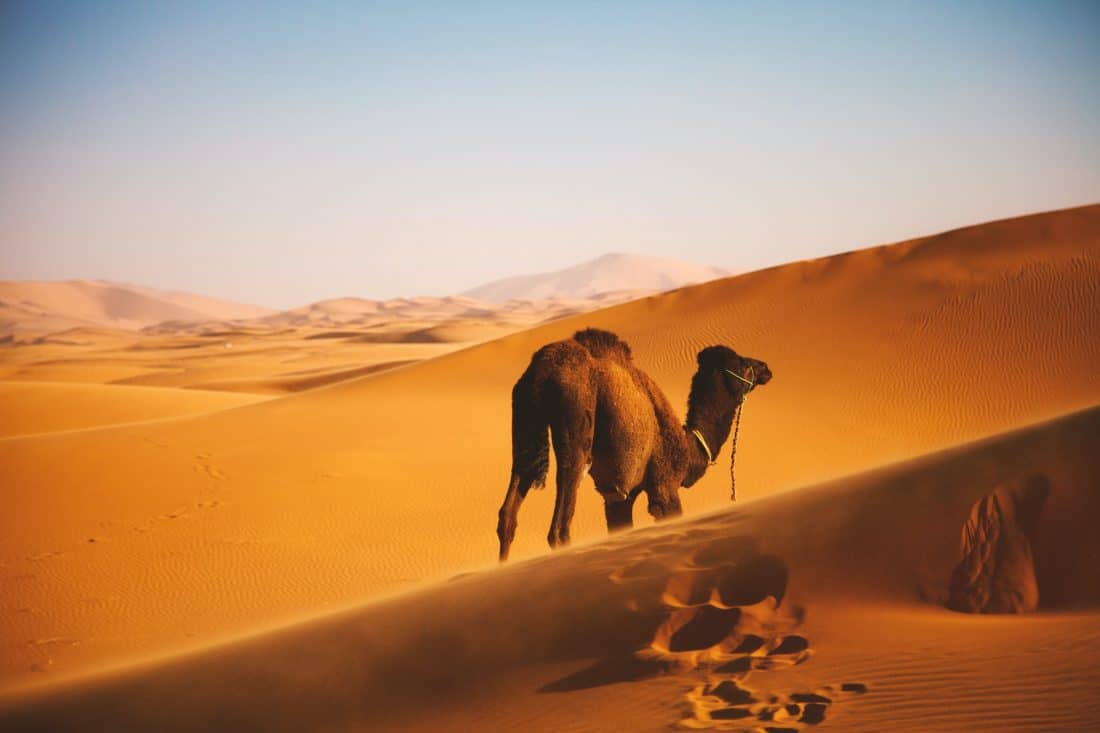
3. Chefchaouene
Chefchaouen is located in the middle of the Rif Mountains. It is very relaxed, offers reasonable accommodation and is visually stunning. The streets and buildings are painted a vibrant sky blue and the mountains in the background are rugged and dramatic. It is a great place to wander, shop and drink mint tea.

4.Fez
This ancient and mighty city is one of the best places in the country. The narrow streets are filled with wonderful smells, mosques, craft shops and crowds. While Fez can be a bit overwhelming, it's just magical once you get used to the pace of the city.
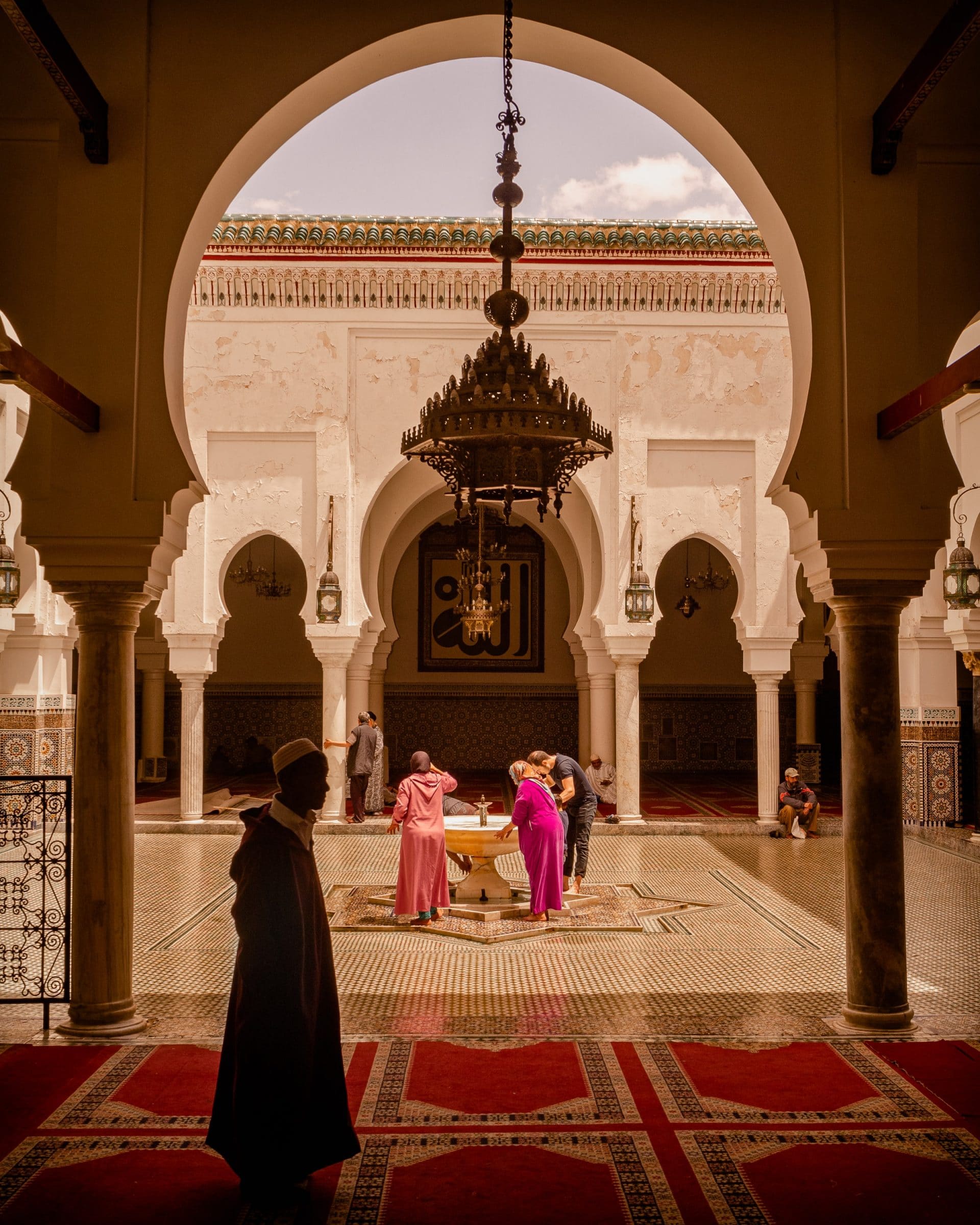
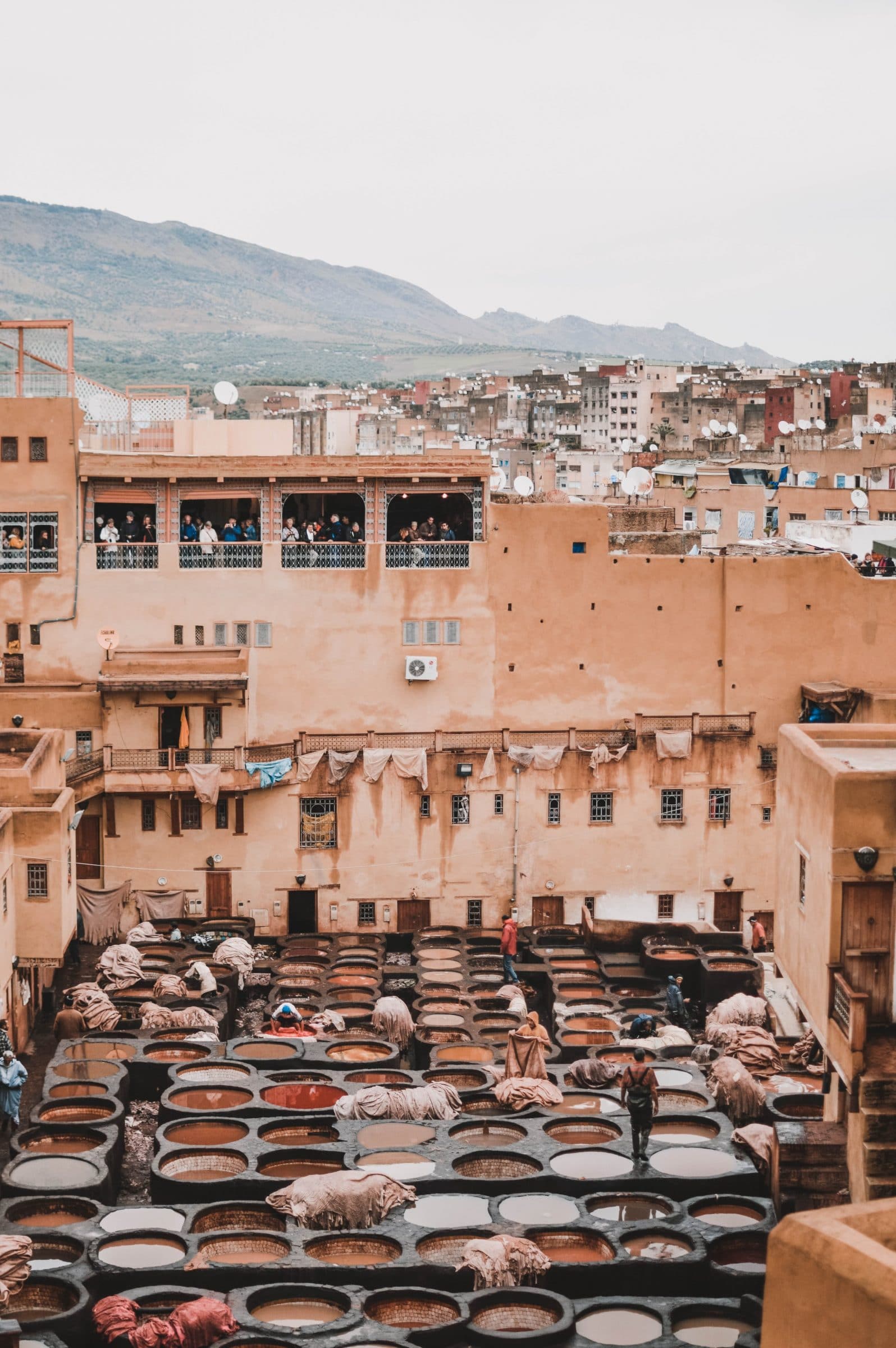
5. Visit a Hammam
A hammam is a steam bath that is popular in North Africa. They are usually found near mosques and can be luxury or public (traditional). Visit a no-frills traditional for an authentic and enlightening experience. Public hammams cost about 10 MAD (1 Euro), while hotel hammams can cost 300-500 MAD (30 to 50 Euros).
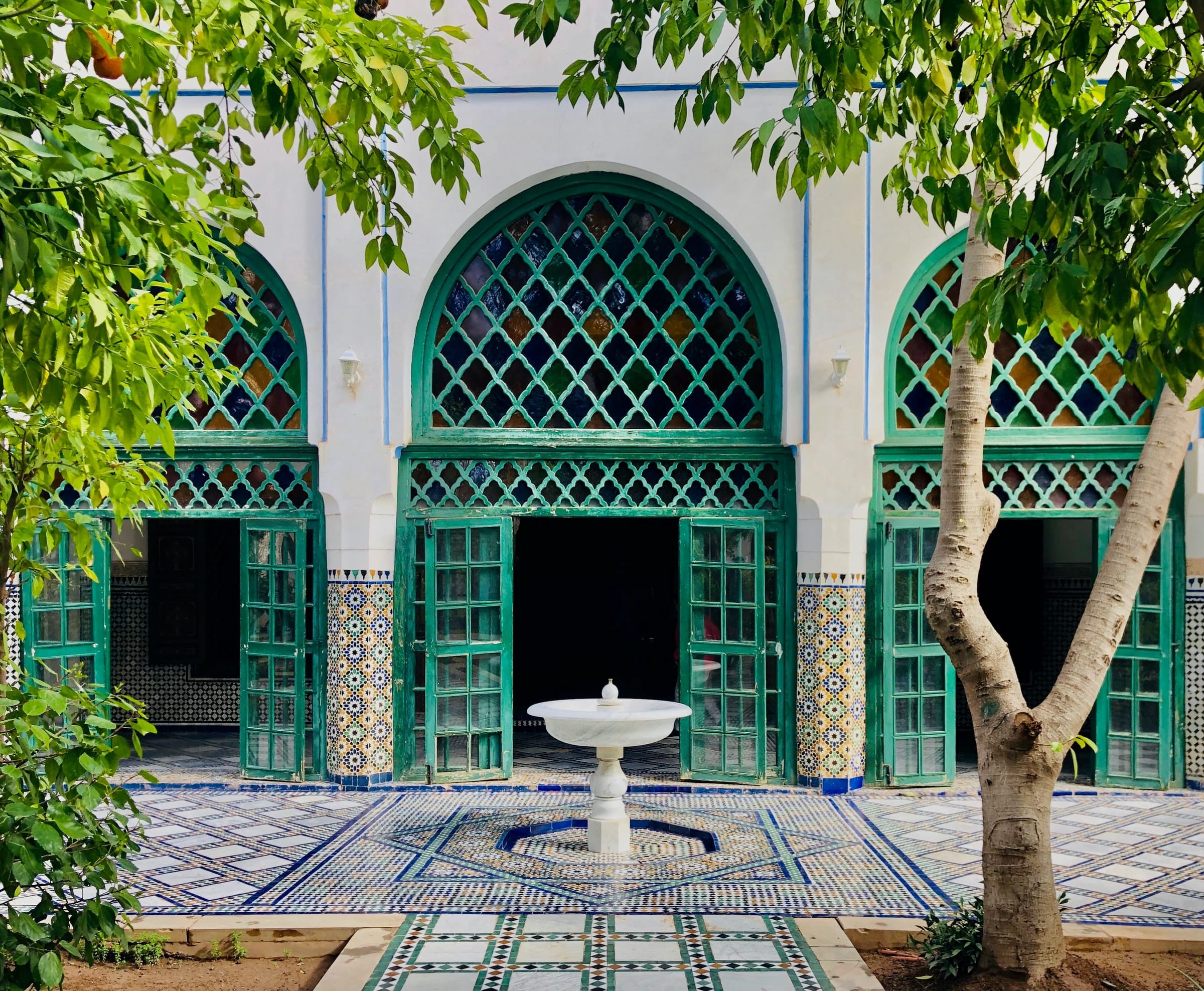
Travel route Morocco on the map
Start of your itinerary: Tangier
It is easy to book a return ticket from the Netherlands to Marrakech, but it is advisable to invest some time and look for a one-way ticket to Tangier and a one-way ticket from Marrakech. This way you don't have to travel all over the country to catch your flight. Tangier (also called Tangier) is completely in the north of Morocco and that's why we thought this was the perfect place to start our tour through Morocco! In Tangier there is not much to see outside of the beach and the small medina. It looks quite luxurious and (in my opinion) does not give a good impression of Morocco. It's a nice city to explore but if I were you I'd go again soon!
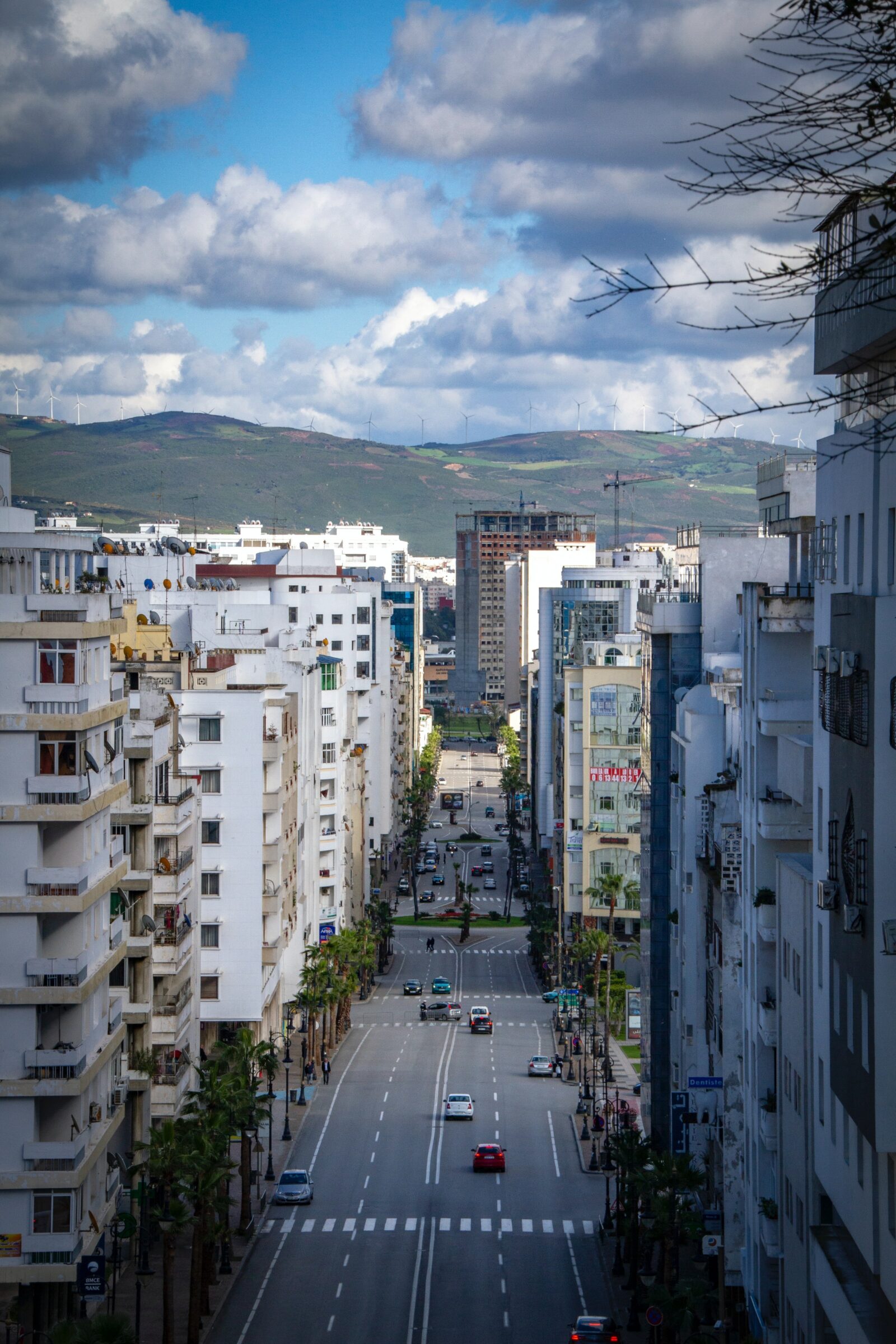
Tangier to Chefchaouen
From the “Gare Routière” you can easily take the bus to Chefchaouen† We walked to the bus stop and bought a ticket for Chefchaouen at the counter. If you buy the ticket outside through a “seller” you often pay € 1,- extra. The cost from Tangier to Chefchaouen is 50 dirhams (€ 5) and it takes about 3 hours. In Chefchaouen the bus stops again at the bus stop and from there it is about a 10-minute walk to the medina, the heart of the blue town. If you don't feel like walking, there are of course dozens of taxis waiting for you to take you to your hotel. Keep in mind that if you have a hotel or hostel in the medina, you still have to walk a bit.
Chefchaouen
Our favorite place in Morocco, Chefchaouen† This place should not be missing from your Morocco itinerary! The beautiful, blue town is nestled between the mountains and hills that provide breathtaking views! You can easily spend 2 days here. Start your day with a delicious breakfast in one of the many restaurants with a view of the mountains. Then you can get lost in the medina of Chefchaouen† Every corner is beautiful and you will never get bored. A must do is to end your day at the viewpoint of Chefchaouen† Here you have a beautiful view over the entire town where you can watch the sun go down.
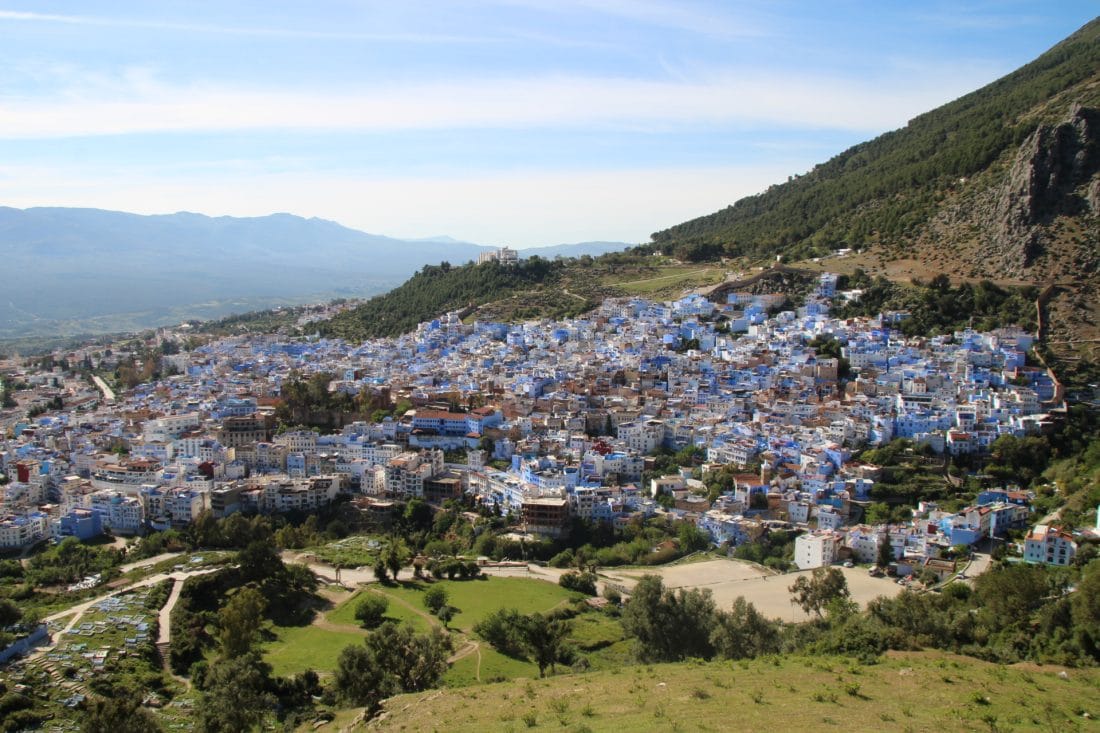
Chefchaouen to Fes
After lunch we left for the Chefchaouen bus stop to continue our tour through Morocco to Fez† However, we had underestimated this trip a bit, probably because our trip from Tangier to Chefchaouen had gone so well. The costs of Chefchaouen to Fes are 60 dirhams (€ 6,-) and it takes you about 5 hours. It took us 6 hours because we were dropped in Ouazzane informing us that we had to wait for the bus to Fez. Apparently our bus didn't go there. After waiting 3 minutes our bus showed up and a little later we were stuck between the locals on our way to Fez.
In Fez you have to prepare for some kind of culture shock. Especially if you have to find your hostel or hotel in the medina. I say search because it really is a maze! There are of course dozens of locals around you who offer to help you. But with a little perseverance and your offline map you will get there!
Fez
Fez is one of the royal cities of Morocco and absolutely worth a visit. It really shouldn't be missed in your Morocco itinerary! Real must-sees in the city are of course the many narrow alleys of the medina and the main attraction of Fez: the 'tanneries† Do you want to escape the crowds for a while? Then it is nice to walk towards the palace of Fez. You then walk through a beautiful park and at the palace you can photograph the beautiful architecture.

Fes to Merzouga
Do you have enough time like us? Then take another day in Fez so that you can mentally prepare yourself for the long journey ahead. If you have less time, you can take the night bus on day 5 to Merzouga. The bus does not leave until 22.00 p.m. The costs of Fes to Merzouga are 200 dirhams (€ 20,-) and this takes about 11 hours. Along the way you stop a number of times, but it is a long seat, the longest in this tour / travel route through Morocco.
dunes
In the morning around 06.00 am you arrive in dunes† The difference between Fez and Merzouga is really huge. This ensures the nice diversity in your tour through Morocco. All hotels and hostels in dunes offer activities in the desert. You can choose your own means of transport: a jeep, a quad or a camel. We have opted for a tour where you spend the night in the desert. Before sunset you start by crossing the desert so that you can enjoy the sunset in the middle of the desert.
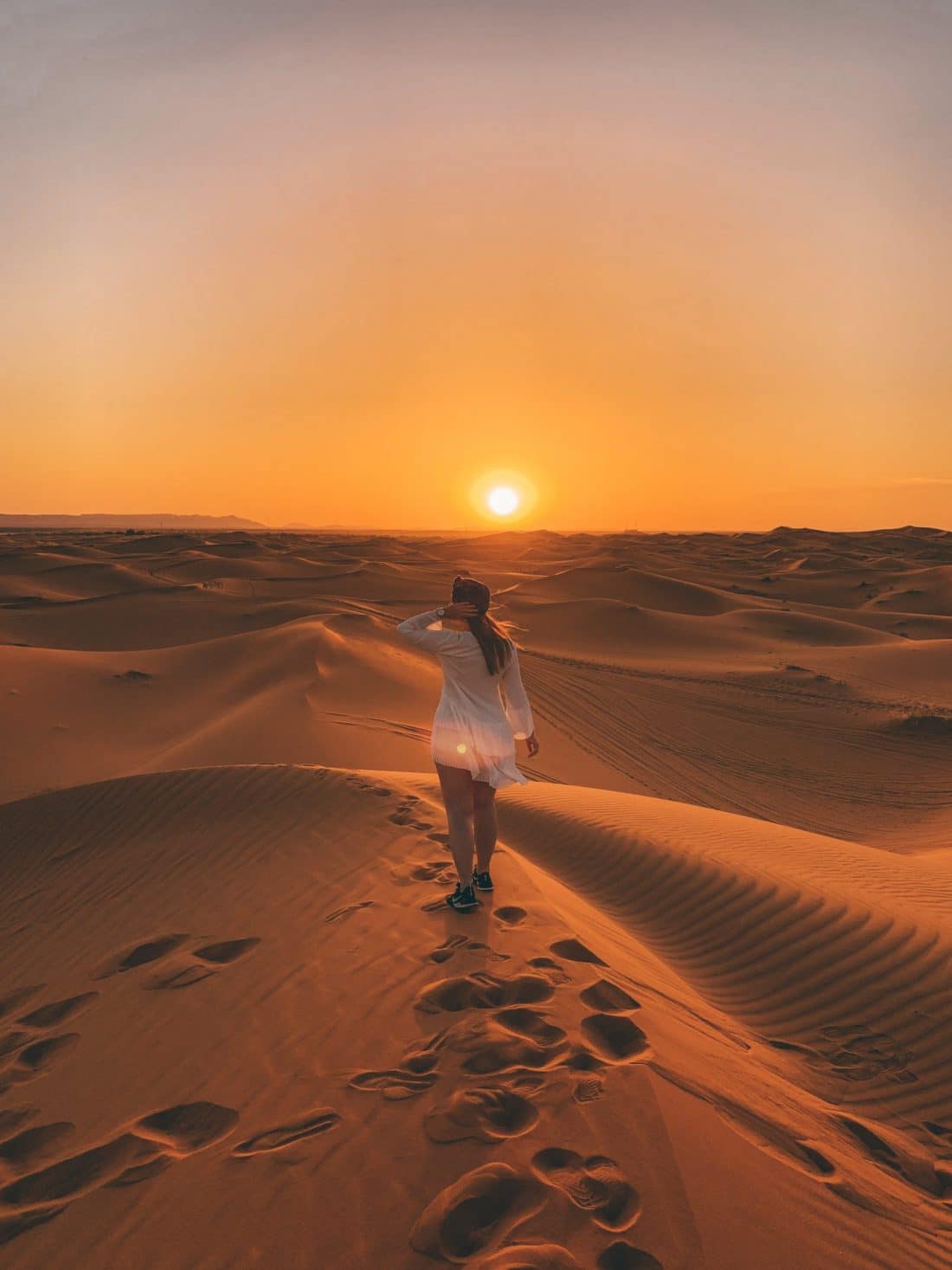
You spend the night in one of the camps in the middle of the desert where you make music together in the evening and enjoy Moroccan food. All this under one of the most beautiful starry skies I've seen! The camp is quite luxurious (even though we opted for the cheapest option). You have a normal toilet, toilet paper, soap and even a mirror! If that's not a luxury... right in the middle of the desert!
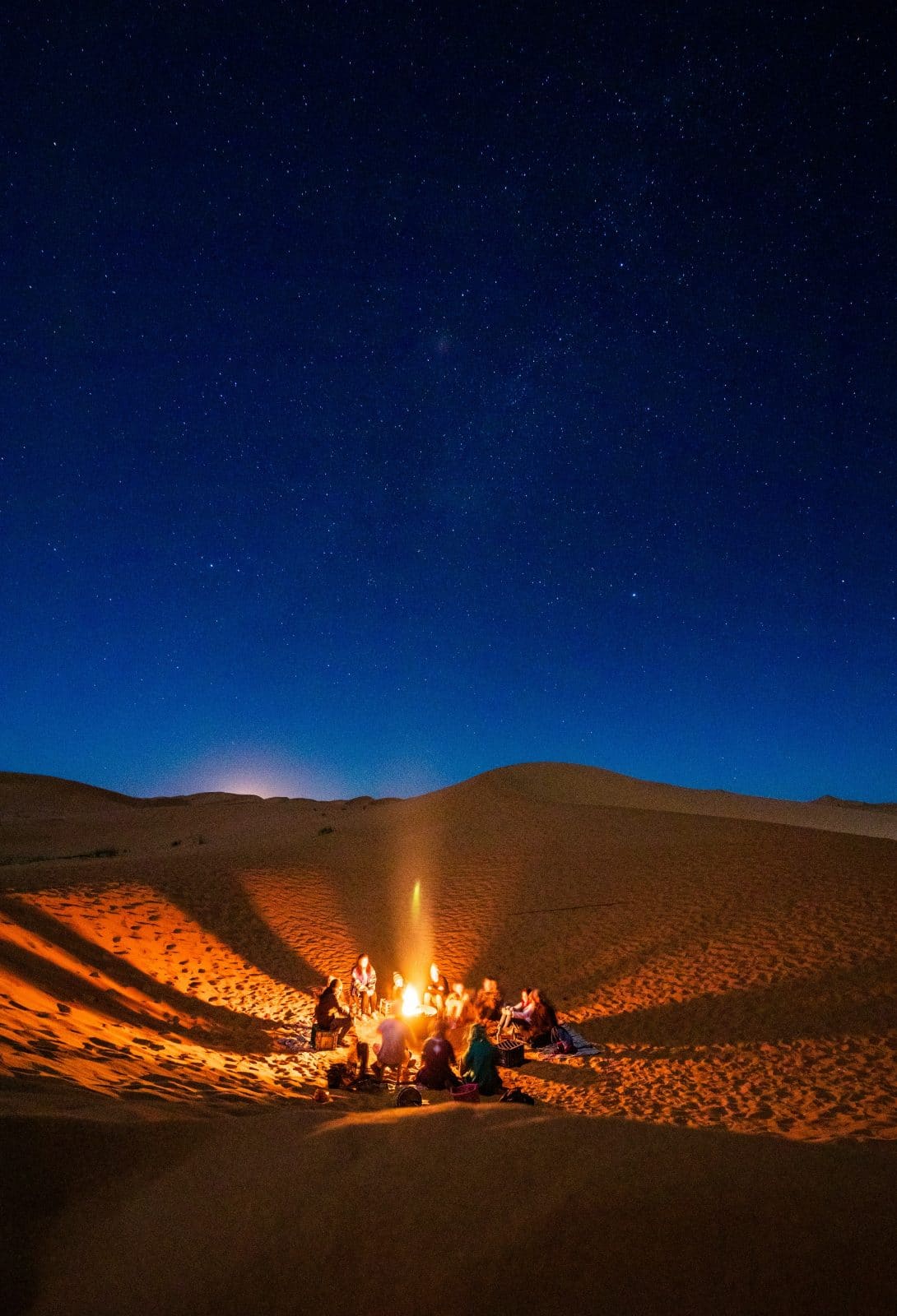
Merzouga to Ouarzazate
In the morning (better said night) you will be woken up at 04.00 AM to go back to the 'civilized world' so that you can enjoy the sunrise in the desert on the way. A beautiful experience! You will arrive at your hotel or hostel around 06.00 a.m. and breakfast will be ready for you. After breakfast we immediately went to the bus stop of Merzouga where we bought a bus ticket to Ouarzazate† The costs of Merzouga to Ouarzazate are 100 dirhams (€10) and it takes you about 7 hours. Along the way you cross all the villages on the most bizarre winding mountain roads. They don't know a highway here.
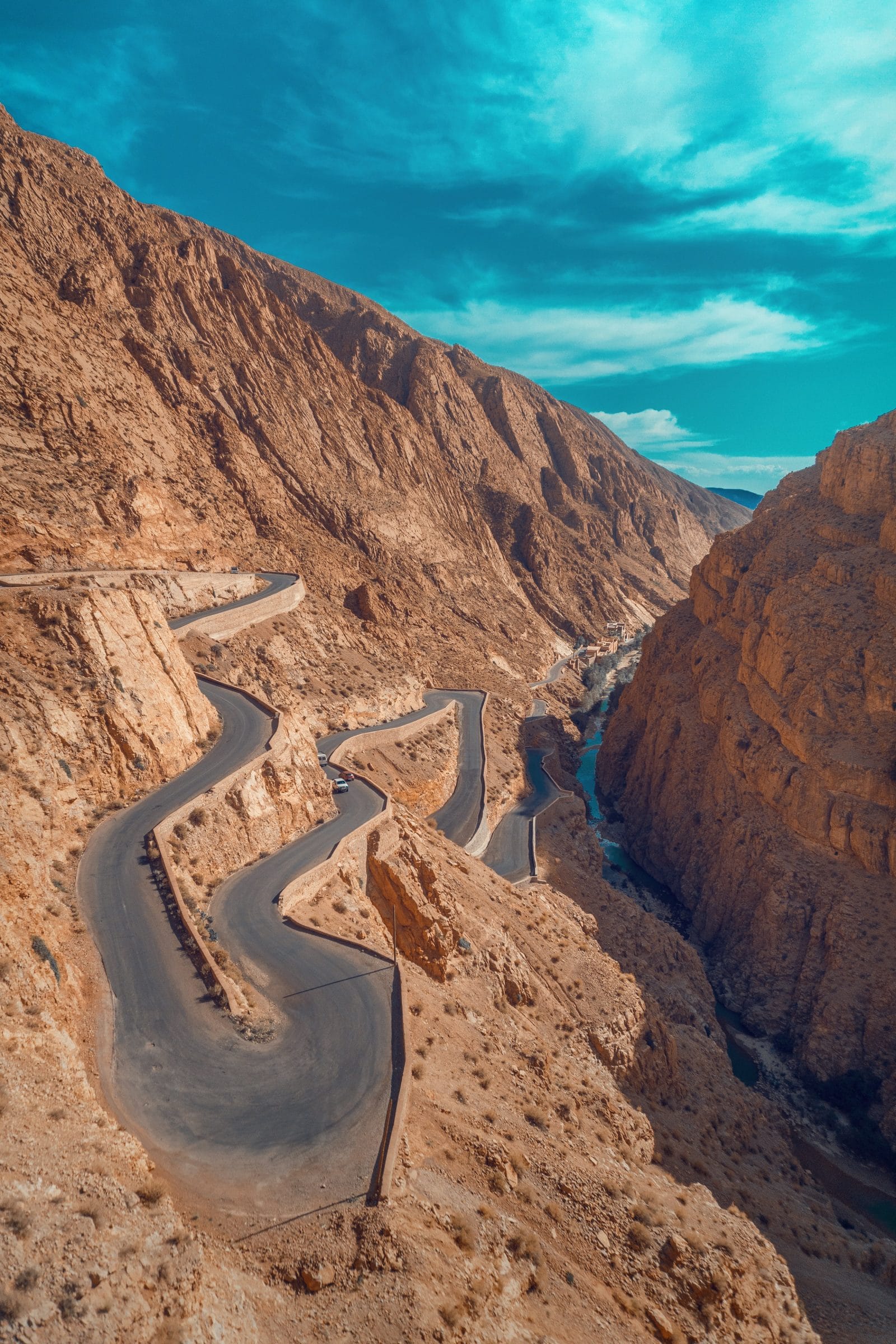
Ouarzazate
We thought Ouarzazate a great place to catch your breath after the intense days we had behind us. Are you in a hurry? Then you have seen Ouarzazate in 1 day. A must see in Ouarzazate is Ait Ben Haddou† We took a taxi from our hostel, 2 hours before sunset. The drive towards Ait Ben Haddou is super beautiful. Our taxi driver stopped at a viewpoint where you can see Ait Ben Haddou in the distance. Highly recommended! In Ait Ben Haddou you can walk around for hours in my opinion, we only had 1 hour and I thought this was too short. It is therefore advisable to arrange your own transport and not to depend on a taxi. In addition to wandering around in this beautiful area, you can also buy many beautiful souvenirs here.
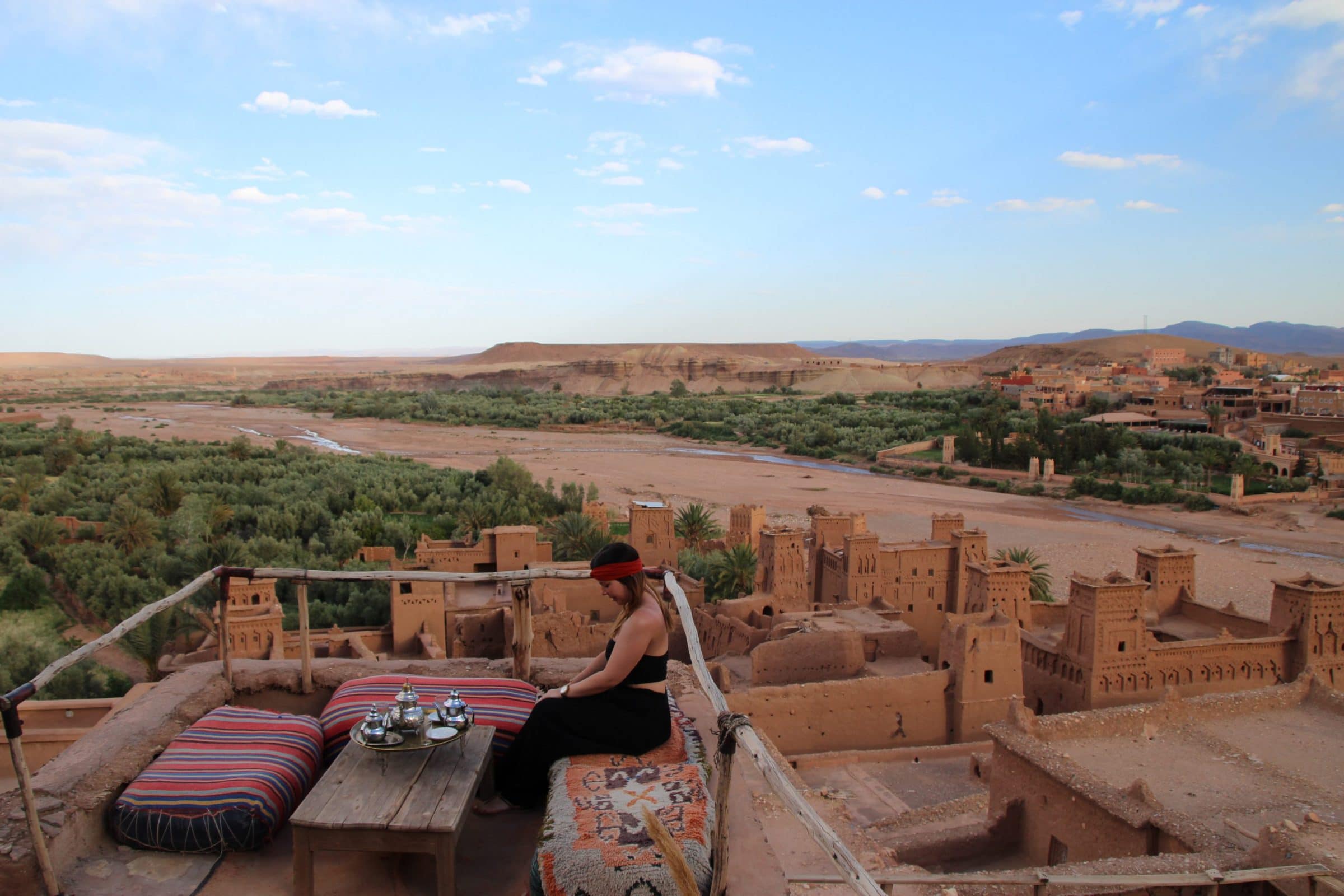
Ouarzazate to Marrakech
Marrakech should of course not be missing from a travel route through Morocco. You can travel to Marrakech from Ouarzazate in 2 ways. The bus is € 1,- cheaper, but it often takes 1 hour longer. It is also more risky as you travel through the mountains and this is not always suitable for a bus. That € 1,- was not worth it to us and we opted for a shared taxi. Fortunately, we only had to wait fifteen minutes until our shared taxi of 6 people was full. The costs of Ouarzazate to Marrakech with a shared taxi are 100 dirhams (€ 10,-) and it takes you about 5 hours. It is an intense ride through the Atlas Mountains (read: high level and a lot of curves) but it is so beautiful!
After a 5 hour drive you will arrive at the taxi place in Marrakech and you can change to another taxi that will take you to the center of Marrakech. When you have booked your hostel in the medina of Marrakech, you still have to walk (and search).
Marrakech
We have our days in Marrakech split into 2 parts. We spent 2 nights in 'Old Marrakech, in the middle of the medina' and 2 nights in 'New Marrakesh† This is definitely recommended so that you can experience the difference. The difference is big! New Marrakech is also a nice end to your tour through Morocco.

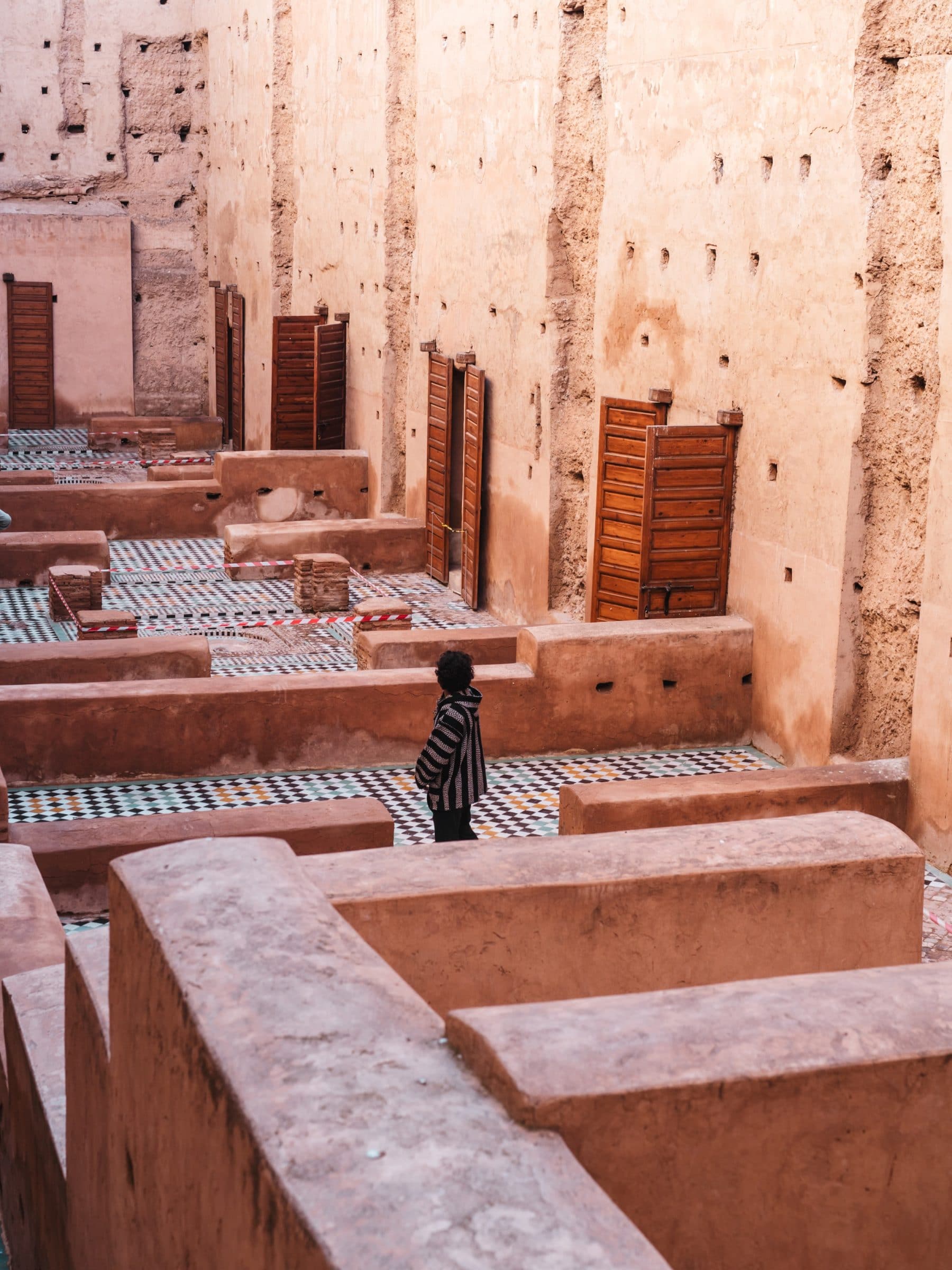
Marrakech is very touristy, a very different experience from what you have experienced so far. Nevertheless, Marrakech cannot be missed in your planning. Visit the Secret garden, Jemaa El Fna, the park behind the Koutoubia mosque and the medina.
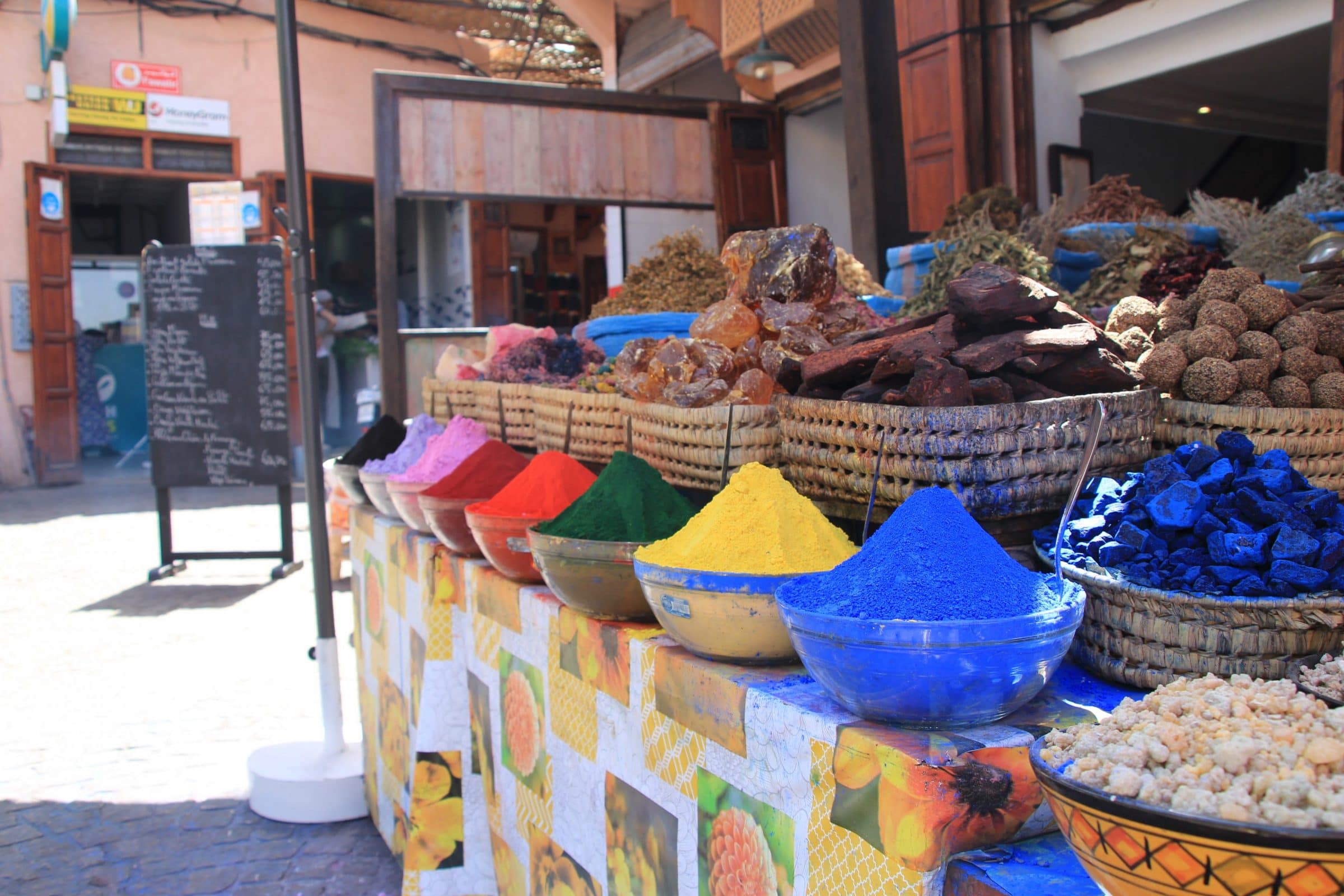
End of the Morocco itinerary
Everything comes to an end, including this travel route through Morocco. From Marrakesh it is only fifteen minutes to the airport and for this one-way ticket you pay (with some negotiation) about 70 dirhams (€ 7,-).
Travel tips and travel information Morocco
When is the best time to travel to Morocco?
The best time to visit Morocco is in spring (mid-March to May) or autumn (September to October). The weather is warm but pleasant, unlike the cold temperatures and snow in winter or the heat of summer.
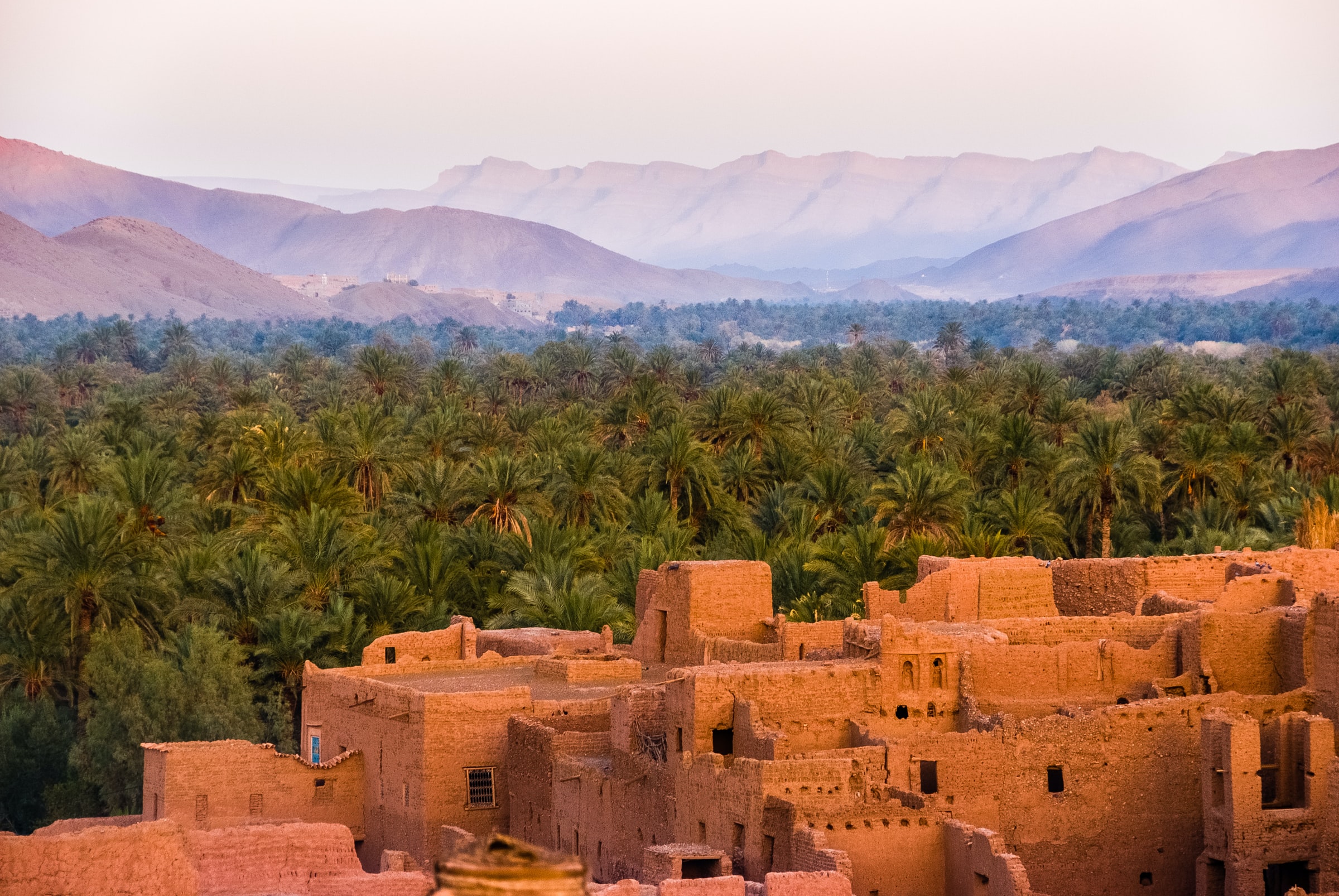
Coastal Regions of Morocco – The coastal regions can be visited all year round. In winter they are pleasantly mild, while in summer they bask at temperatures around 20°C.
Inland and mountain areas – The High Atlas Mountains can also be visited all year round, although it does get cold in winter. Summer can still be a little too hot for long-distance hikes, but if the heat doesn't bother you, the conditions between April and October are fine. Outside of these months, there is snow on the peaks, making hiking more dangerous, but providing spectacular panoramas.
This Morocco itinerary can basically be done all year round. Provided you take into account the temperature differences.
Do you need a visa for Morocco?
There is no visa requirement for people with a Dutch passport. You will receive a visa for three months upon entering Morocco. The only requirement is that your passport is still valid for at least 6 months when you leave for the Netherlands.
Is there a dress code in Morocco?
Our experience has shown that it is always useful to take (thin) long pants and a sweater or cardigan with long sleeves during your entire travel route through Morocco for the sometimes cooler evenings. When you go to Morocco in the summer, airy clothing for the day is sufficient. If you go to Morocco in winter, it is better to pack warm clothes and a rain jacket.

Women, but also men, are expected to have their shoulders and knees covered. Pants or skirts that reach below the knees and blouses or t-shirts with (short) sleeves are good. A thin shawl is useful to wrap up briefly or to use against the sand during a camel ride, for example. If you go into the mountains for walks and trekking, good walking shoes are recommended, otherwise a pair of shoes that you can walk well in or a pair of hiking sandals will suffice. In the summer, you can also bring a pair of flip flops. In winter it is advisable to bring closed shoes, it can be cool and it rains more, especially in the mountains.
Do you need a power plug in Morocco?
The mains voltage is 220 volts almost everywhere in Morocco. The connection is the same as we know it here. A world plug is therefore not necessary. You may find that in some areas or places the mains voltage is as low as 110 volts, but it is not really necessary to carry an adapter unless you really can't live without power.
Can you drink tap water in Morocco?
Do not drink water from the tap! Bottled water is available almost everywhere. Check whether the cap is still 'good' on. It is better not to put ice cubes in your drinks unless you have checked whether they are made from spring water.
What is the currency of Morocco?
The Dirham is the currency used in Morocco. You pronounce it as 'dirhem', the plural of Dirham is then 'Darahim', but we as Europeans call it plural Dirhams. The internationally used currency code is 'MAD'. The Dirham is issued by the Central Bank of Morocco 'Bank Al-Maghrib'.
In general you can say 1 Dirham is about 10 Euro cents and 10 Dirham is about 1 Euro. Usually it is slightly more favorable for Dutch people (you get a little more Dirhams for your Euros) but for the sake of convenience we recommend to just keep 10 = 1. When you subtract the exchange costs, you are on average about 10 Dirham per euro.
What are Riads?
A riad is a traditional Moroccan house or palace with an atrium or courtyard. The word riad comes from the Arabic word ryad which means garden. Riads were the homes of the wealthier part of the bourgeoisie. These are often located in the old, walled parts of the city, but can also be found in the countryside. Visit one or more during your trip, you won't be disappointed!
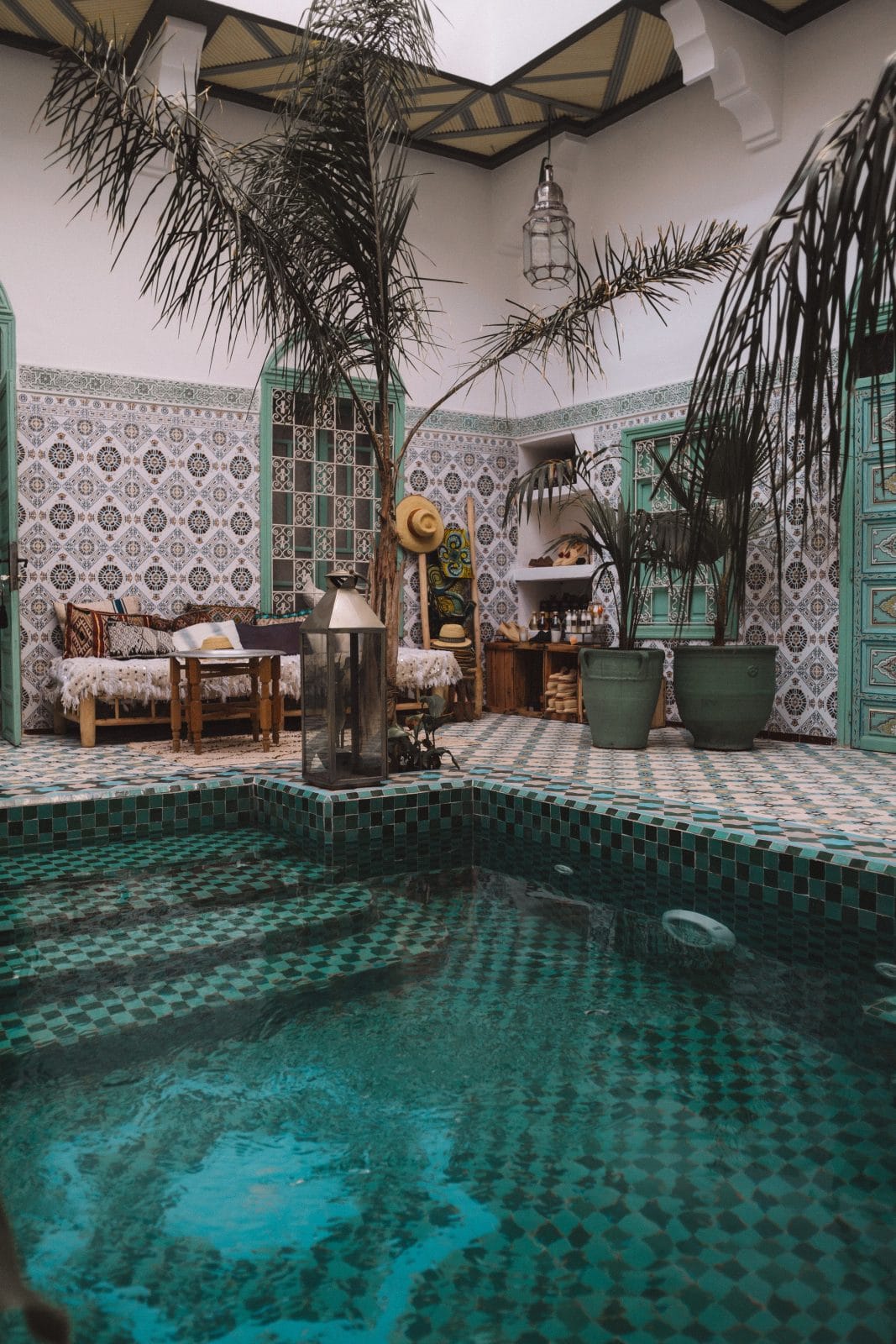
Which public holidays are there in Morocco?
Morocco has a lot of holidays and it would of course be extra cool to include a few holidays during your travel route through Morocco. The dates of Islamic religious holidays are determined by the lunar calendar. Those holidays fall on a different date every year, because the monthly calendar annually 'loses' 11 days compared to the western Gregorian calendar. National holidays do fall on the same date every year. Below is a list of the holidays. Please note that banks, post offices and shops may be closed during national holidays and sometimes even Muslim holidays. During Ramadan it is best not to eat between people during the day.
Islamic holidays
lunar calendar – The Islamic calendar is based on a lunar year and therefore deviates from the counting of the Western, Gregorian calendar. According to the Western calendar, the Islamic holidays move forward ten to eleven days each year. The largest Islamic festivals are Ramadan, the Sugar Feast and the Feast of Sacrifice.
Ramadan – Ramadan (24 April to 23 May 2020, 13 April to 13 May 2021, 2 April to 2 May 2022) is the most important Islamic holiday. The festival lasts throughout the ninth month of the Islamic year and is the month of fasting. During this period, Muslims do not eat, drink or smoke between sunrise and sunset. Fasting is one of the most important duties of a Muslim.
Ramadan can lead to some inconvenience for travelers; many restaurants are closed; eating, drinking and smoking in public is not appreciated. For tourists, however, is cooked and taken care of. It goes without saying that you do not eat (on the street or on the terrace) in front of fasting people. On the other hand, experiencing such an important party is special.
Sugar festival – The three-day Sugar Feast, Eid al-Fitr (May 23-25, 2020, May 13-15, 2021, May 2-4, 2022), heralds the end of Ramadan. The house is cleaned one more time and the people dress as beautifully as possible. Everyone visits each other to congratulate each other on a well-completed fasting period. The poor also get something extra. The pilgrimage to Mecca begins with the Sugar Feast.
Feast of Sacrifice – The festival of sacrifice, Eid al-Adha (July 30 to August 1, 2020, July 20 to 23, 2021, July 9 to 11, 2022), begins on the tenth day of the last month of the year. Sheep are slaughtered everywhere on that day to commemorate Abraham. After all, Abraham was willing to sacrifice his son to God, but at the last moment he replaced the boy with a sheep.
National holidays
January 1 – New Year's Day
January 11 – Celebration of the Istiqal Manifesto
May 1 – Labor Day
July 30 – Coronation Party
August 14 – Wadi Eddahab (commemoration of the Spanish Sahara conquest)
August 20 – Day of the Revolution
August 21 – King's Birthday and Youth Day
November 6 – Day of the Green March
November 18 – Independence Day
July 30 is Morocco's national holiday. On that day, King Mohammed VI succeeded his father Hassan II. This day is celebrated with fireworks, parades and music.
How much does it cost to travel in Morocco?
Cost of accommodation in Morocco – Dorms are on average between 80-110 MAD (8 to 11 euros) per night in the big cities like Marrakesh and Fez, and about 50 MAD (5 euros) on the outskirts. Private rooms in hostels start at around 200-250 MAD (20-25 euros) in the cities and are much cheaper in smaller, less touristy areas. Budget hotels start around 150 MAD (15 euros) per night for a double room. Accommodation in Marrakech and Fez will be more expensive as these are the main cities.
Food Costs in Morocco – Food in Morocco can be extremely cheap, especially if you eat at the many markets. A pot of mint tea costs between 8-10 MAD (1 euro). You can enjoy local dishes, including the popular tagine. Tajine is a meat and vegetable dish for about 35 MAD (3,5 euros).
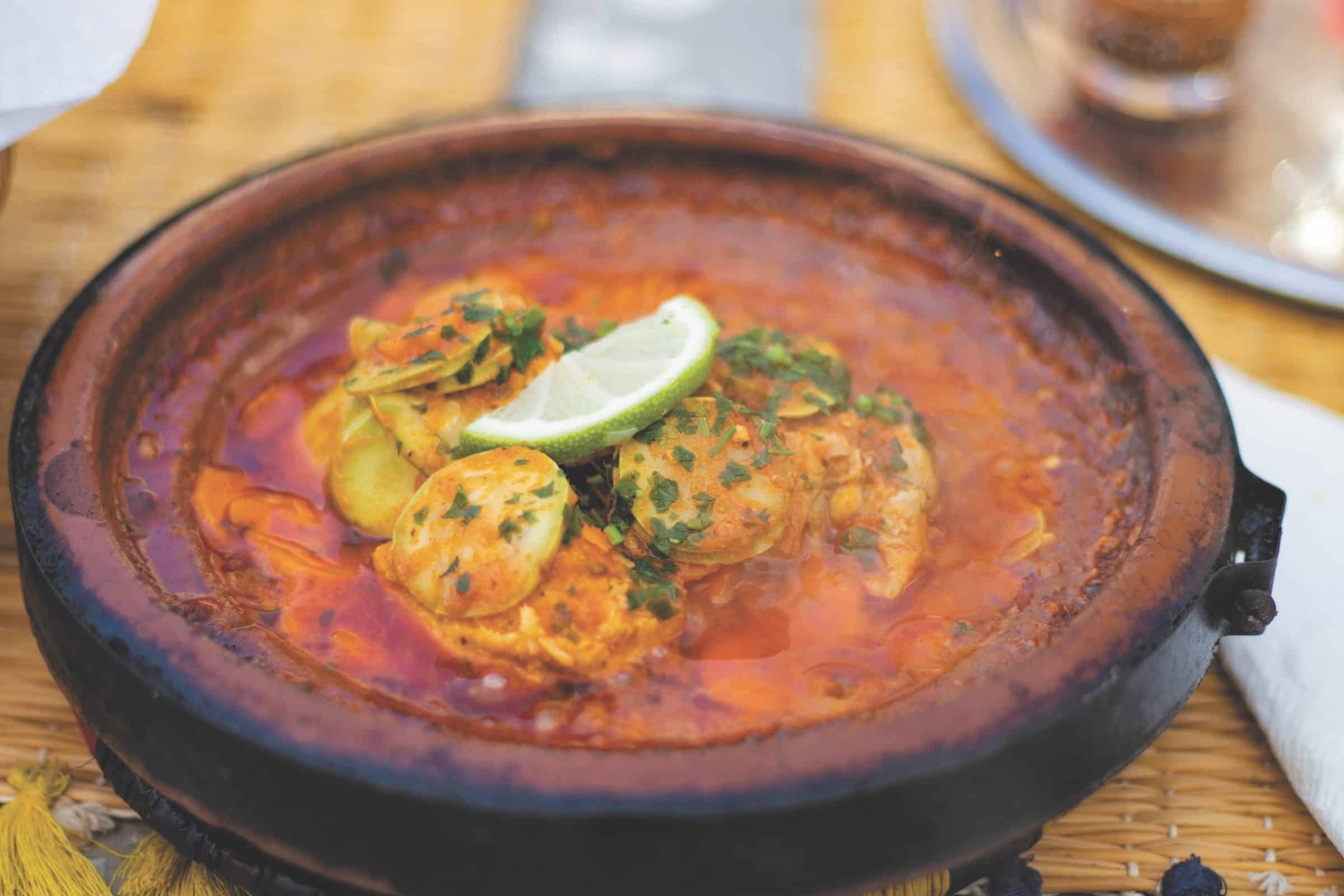
Sandwiches, pizza and most other dishes range between 30-50 MAD (3-5 euros). You'll find more expensive restaurants inside with table service that cost around MAD 100 (10 euros). Fish in coastal towns such as Essaouria costs about 100-150 MAD (10-15 Euros), while a lobster costs about 350-400 MAD (45-40 Euros). Seafood dinners include drinks, salad, and bread.
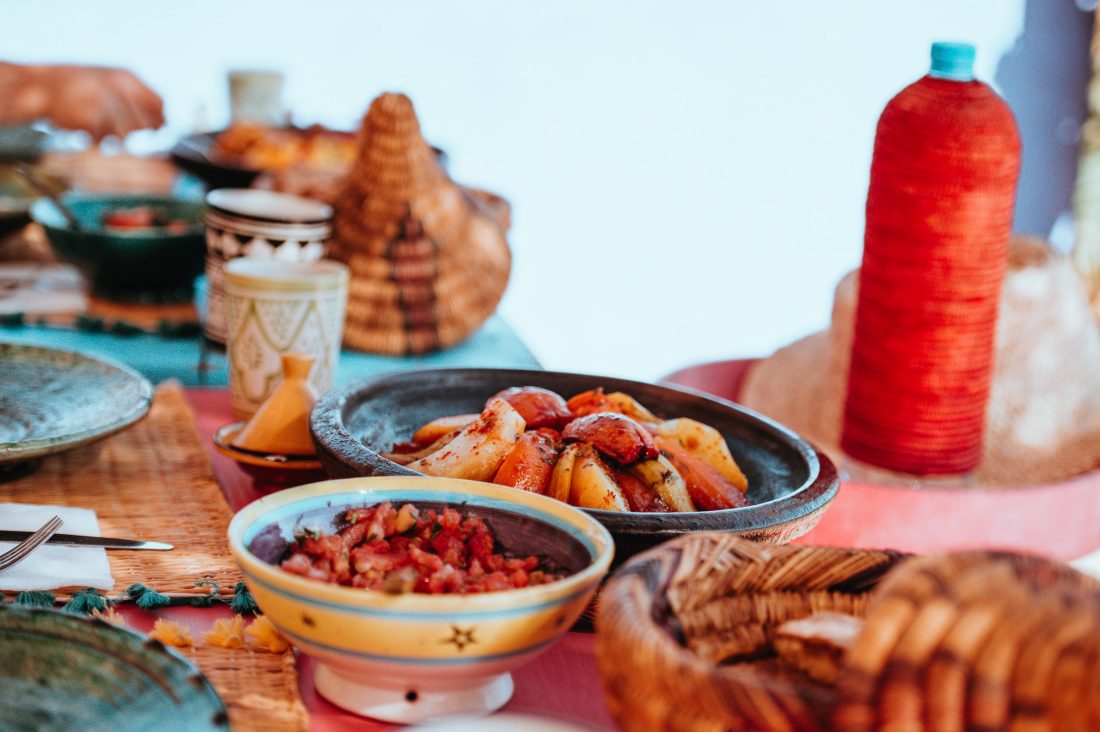
For more expensive tourist and western restaurants, you're looking at around 150 MAD (15 euros) or more per main course. Beer and wine range up to 70 MAD (7 euros) for a drink (however, there aren't that many options to drink in Morocco. There's no need to do any shopping here as the food is quite cheap and it's much easier to get out But if you do, expect to pay MAD 200 per week for groceries that include pasta, vegetables, chicken and other staple foods.

Fees for Activities in Morocco – Popular tourist destinations, such as Marrakesh, offer guided group tours. Usually this includes a car that will take you to the most interesting attractions, shops and around the medina (neighborhood). A full day tour costs about 900 MAD (90 Euros), while a half day costs about 500 MAD (50 Euros). A trip to the desert can be organized with a large travel agency for different prices. The price depends on how long you go and what is included. A visit to the local hammam (bathhouse) for a spa treatment costs just 10 MAD / 1 Euro (low-end) and can go up to 500 MAD / 50 Euros (high-end). The prices of specific attractions vary widely in price depending on the activity, luxury and location.
Tips to Save Money in Morocco
Want to save money on your Morocco itinerary? It is not necessary! It doesn't cost a lot of money to travel through Morocco. It's relatively cheap! Where travelers lose their money is mainly eating western meals and fancy dishes. It is also expensive to stay riads an impact on your budget. If you don't, you can save a lot of money. Here are some tips to save money in Morocco:
Eat street food – It is extremely easy to get cheap and good streetfood to eat in Morocco. While restaurant meals typically cost just 30 MAD (3 euros), street food is even cheaper. For just a few euros you can enjoy delicious kebabs, sausages, grilled corn on the cob, hot roasted chicken and huge sandwiches. Stick to eating at the local markets in the medina and you'll spend very little money on food.
Negotiate with taxis – Make sure to negotiate a price before getting in the taxi. There are no fixed prices and you will have to negotiate hard.
Avoid fake guides – Faux guides (or fake guides) will hang out in the medinas and offer you tours. Firmly say no and keep walking away. They are persistent, but will eventually give up if you keep walking!
Beware of thieves – Petty theft, usually involving wallets, watches and cameras, is common in the busy medinas across the country, so stay alert and keep your valuables out of sight.
don't drink alcohol – Even though drinking is frowned upon in the country, there are still plenty of places where you can drink. They are generally expensive (as alcohol is not common here) and the drinks are not that good. Don't drink on your itinerary or tour of Morocco, save money and adhere to local standards.












